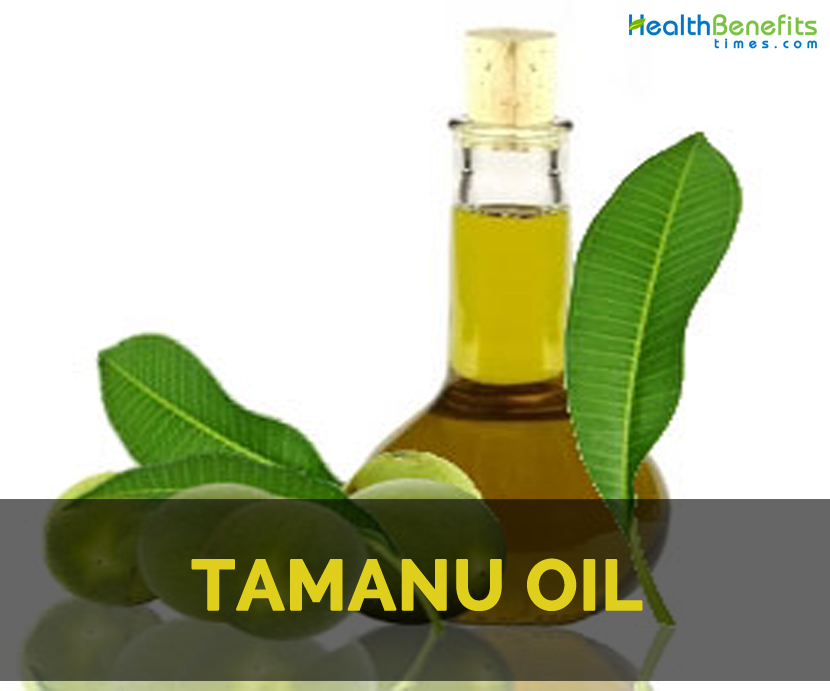| Tamanu oil facts and benefits Quick Facts | |
|---|---|
| Name: | Tamanu oil facts and benefits |
| Origin | Native to East Africa, Australia, Southern Coastal India and Malesia. It is also found in Thailand, Myanmar, Vietnam, Malaysia, Sri Lanka, South India, Polynesian and Melanesian islands. |
| Colors | Dark green to brown |
| Health benefits | Treat skin conditions, Skin and hair health, Prevents diaper rash, Lower inflammation, Relieve rheumatism |
| Name | Tamanu oil facts and benefits |
|---|---|
| Tamanu oil facts and benefits | Calophyllum inophyllum L. |
| Native | Native to East Africa, Australia, Southern Coastal India and Malesia. It is also found in Thailand, Myanmar, Vietnam, Malaysia, Sri Lanka, South India, Polynesian and Melanesian islands. |
| Common/English Name | Beauty leaf oil, Calophyllum inophyllum oil, Calophyllum inophyllum seed oil, Calophyllum oil, Kamani oil, Dilo oil, Calophyllum inophyllum essential oil, Foraha oil, Poon oil, Alexandrian laurel oil, Nyamplung oil, Honne oil, Domba oil, Undi oil, Fetau oil, Pinnai oil, Punnai oil, Pinnay oil, Daok oil, Kamanu oil, Tamanu nut oil, Bitaog oil, Takamaka oil, Punna oil, Laurelwood oil, Punnaga oil, Tacamahac oil, Fetaʻu oil, Ballnut tree oil, Palo maria oil, Ballnut oil, Beach calophyllum oil, Btaches oil, Mù u oil |
| Name in Other Languages of Tamanu plant | Australia: beauty leaf; Malaysia: penaga, bitangor; Indonesia: nyamplung, bitangor; Philippines: palo maria, bitaog; Palau: btaches; Yap: biyuch; Chuuk: rekich; Andaman Islands: canoe tree; Guam: daog, daok; Fiji: dimanu, dilo; Sri Lanka: domba (දොඹ); Samoa: fetau; Tonga: fetaʻu; Madagascar: vintanina, foraha; Maldives: funa; West Indies: galba, galaba; Solomon Islands: oleole, guoria, ba’ula, gwarogwaro; Papua New Guinea: bush calophyllum, kalofilium, island cedar; Hawaii: kamanu, kamani; Tanzania: mtondoo; Vietnam: còng, mù u; Vanuatu: nabangura; Burma: ponnyet, ph’ông; India: punning, punnaga, punna, punnai, pinnay, pinnai; Myanmar: poon; India: sura hone, chura punnai (‘சுரபுன்னை); Tamil: vazhai (வழை); |
| Method of extraction | Refined, cold pressed |
| Odor | Sweet, nutty |
| Color | Dark green to brown |
| Traditional uses |
|
| Precautions |
|
References:
https://www.naturalsourcing.com/product-literature/NS_info_tamanuoil.pdf
http://www.volcanicearth.com/tropical_medicine.html
http://www.medicinehunter.com/tamanu
http://www.paradisemoon.com/herbal/Siam-Natural_tamanu_doc.htm
http://www.naturallythinking.com/aromatherapy/carrier-oils/tamanu-oil.html
Awesome


